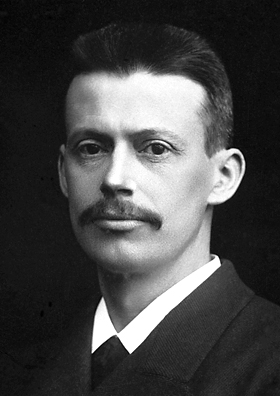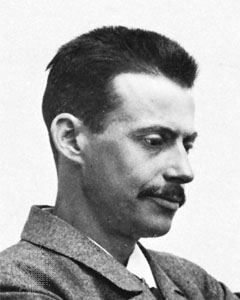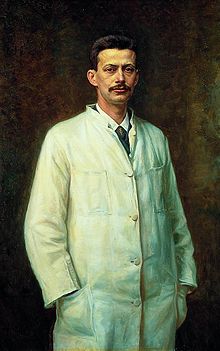<Back to Index>
- Physician Niels Ryberg Finsen, 1860
- Artist Roelof Paul Citroen, 1896
- 3rd President of Finland Pehr Evind Svinhufvud af Qvalstad, 1861
PAGE SPONSOR



Niels Ryberg Finsen (December 15, 1860 – September 24, 1904) was a Faroese - Danish physician and scientist of Icelandic descent. He was awarded the Nobel Prize in Medicine and Physiology in 1903 "in recognition of his contribution to the treatment of diseases, especially lupus vulgaris, with concentrated light radiation, whereby he has opened a new avenue for medical science."
Niels Finsen was born in Tórshavn, Faroe Islands, as the second oldest of four children. His parents were Hannes Steingrim Finsen, who belonged to an Icelandic family with traditions reaching back to the 10th century, and Johanne Fröman, who was born and raised in Iceland. The family moved to Tórshavn from Iceland in 1858 when his father was given the position of Landfoged of the Faroe Islands. When Niels was four years old his mother died, and his father remarried his mother's cousin Birgitte Kirstine Formann, with whom he had six children. In 1871 his father was made Amtmann of the Faroe Islands.
Finsen got his early education in Tórshavn, but in 1874 was sent to the Danish boarding school Herlufsholm,
where his older brother Olaf was also a student. Unlike Olaf, Niels had
a difficult stay at Herlufsholm, culminating with a statement from the
principal which claimed Niels was "a boy of good heart but low skills
and energy". As a consequence of his low grades, he was enrolled in his father's old school, Lærði skólinn, in Reykjavík in 1876. While studying there, his grades improved greatly. In 1882, Finsen moved to Copenhagen to study medicine at the University of Copenhagen, from which he graduated in 1890. Following graduation, he became a prosector of anatomy at
the university. After three years, he quit the post to devote himself
fully to his scientific studies. In 1898 Finsen was given a professorship and in 1899 he became a Knight of the Order of Dannebrog. The Finsen Institute was founded in 1896, with Finsen serving as its first director. It was later merged into Copenhagen University Hospital and currently serves as a cancer research laboratory that specializes in proteolysis. Finsen is best known for his theory of phototherapy, in which certain wavelengths of light can have beneficial medical effects. His most notable writings were Finsen Om Lysets Indvirkninger paa Huden ("On the effects of light on the skin"), published in 1893 and Om Anvendelse i Medicinen af koncentrerede kemiske Lysstraaler ("The
use of concentrated chemical light rays in medicine"), published in
1896. The papers were rapidly translated and published in both German
and French. In his late work he researched the effects of salt, observing the results of a low sodium diet, which he published in 1904 as En Ophobning af Salt i Organismen ("An accumulation of salt in the organism").
Finsen won the
Nobel Prize in Physiology in 1903 for his work on phototherapy. He was the first Scandinavian to win the prize and is the only Faroese Nobel Laureate to date. Finsen married Ingeborg Balslev (1868 – 1963) on December 29, 1892. Finsen's health began to fail in the mid 1880's. He had symptoms of heart trouble and suffered from ascites and
general weakness. The sickness disabled his body but not his mind, and
he continued to work from his wheelchair. He died in Copenhagen on
September 24, 1904.
The Finsen Laboratory at Copenhagen University Hospital is named in his honor, and in Tórshavn there
is a memorial to Finsen, as well as one of the city's main streets
bearing his name. A monument to Finsen designed by the sculptor Rudolph Tegner was
installed in Copenhagen in 1909. It shows a standing naked man flanked
by two kneeling naked women reaching up to the sky. The sculpture was
entitled Mod lyset (Towards the Light), and symbolised Finsen's principal scientific theory that sunlight can have healing properties.